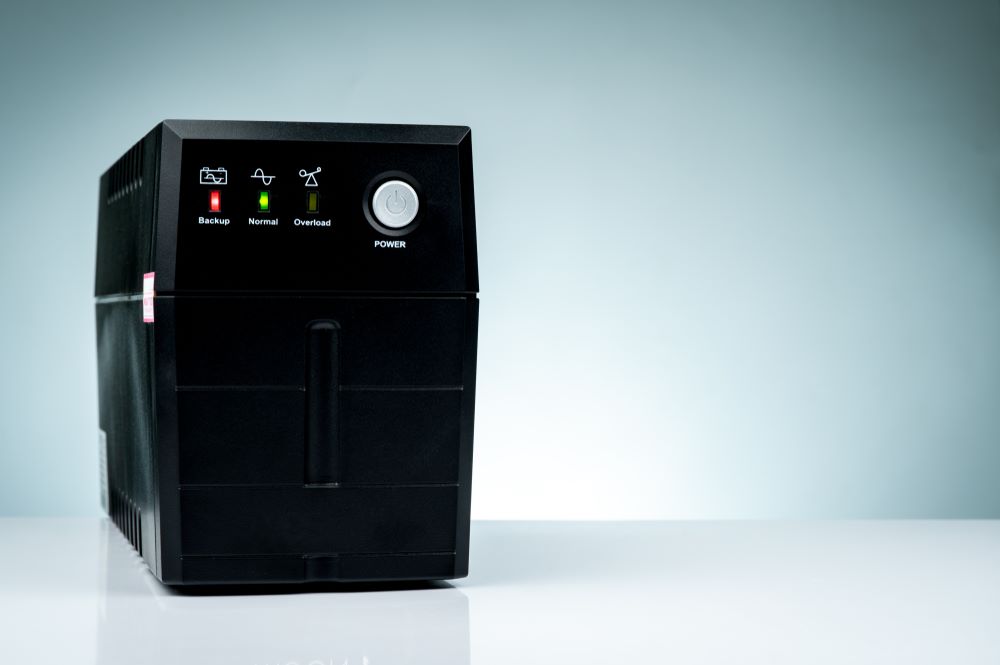
When it comes to protecting critical equipment, choosing the right Uninterruptible Power Supply (UPS) is more than just picking a box with a plug. It’s about ensuring your devices get consistent, clean power when they need it most. But to do that, your UPS must be correctly sized.
Whether you’re safeguarding medical equipment, servers, network switches, or even your home office setup, understanding how to size a UPS ensures you don’t end up underpowered or overspending. Let’s walk through the steps to help you get it right.
Why Proper Sizing Matters
It’s Not One Size Fits All
Every piece of equipment draws a different amount of power. A modem doesn’t consume the same energy as a server or an imaging machine. So, plugging everything into a random UPS without checking its capacity is a bit like loading a bicycle with the weight of a truck.
Undersizing your UPS means it won’t last during an outage, and it might even shut down under load. Oversizing, while safer, can be a waste of money and space. The key is to find the sweet spot: just enough capacity to run your essentials comfortably, with room to grow.
Step 1: List All Critical Equipment
Know What You’re Protecting
Start by writing down all the devices you want to connect to your UPS. This could include:
-
Desktop computers or servers
-
Monitors
-
Modems and routers
-
Network switches
-
Security systems
-
Medical or lab equipment
-
POS systems
If you’re in a business setting, think beyond computers. What would hurt your operations most if the power suddenly disappeared? That’s what your UPS should support.
Consider Essential vs. Optional Loads
Be realistic. Not everything needs to stay on during an outage. Divide your list into two columns: critical and non-critical. Focus on the essential column when calculating your UPS size.
Step 2: Calculate the Power Load (in Watts)
Read the Labels and Manuals
Each device has a power rating, usually found on the back label or in the user manual. It might be listed in watts (W) or amps (A). If it's in amps, multiply by the voltage (usually 120V in the US, 230V elsewhere) to get watts.
For example:
-
A monitor that draws 1.5A on a 120V circuit = 180 watts
-
A router that uses 20 watts = 20 watts
Add up all wattages from your critical equipment list.
Don’t Forget Startup Surge
Some devices especially those with motors, compressors, or internal power supplies draw more power at startup than during regular use. This is called peak load or inrush current. When in doubt, add a 20% buffer to your total wattage to cover startup surges.
Step 3: Convert Watts to VA (Volt-Amps)
What’s the Difference?
UPS systems are rated in Volt-Amps (VA), not watts. So, to match your needs to a UPS model, you need to convert your total wattage to VA.
This is where Power Factor (PF) comes in. It’s the ratio between real power (watts) and apparent power (VA). For most home and office equipment, assume a power factor of 0.7 to 0.8 unless specified.
Formula:Total Watts ÷ Power Factor = Required VA
If your total wattage is 500W and PF is 0.8:500 ÷ 0.8 = 625 VA
So, you’ll need a UPS with at least 625 VA capacity. Ideally, round up to the next size available.
Step 4: Choose Your Desired Runtime
How Long Do You Need Power?
UPS systems don’t provide power indefinitely they just give you enough time to save work, shut down, or wait out short outages. Basic models might last 5–10 minutes under full load, while higher-end units can last 30+ minutes or even hours (with extended battery packs).
Consider:
-
Home office: 5–15 minutes may be enough to save work and shut down
-
Servers: 10–30 minutes can allow failover or safe shutdown
-
Medical or security systems: May require longer runtimes
Check manufacturer specs to see how long each model supports your load. Runtime charts are often available based on wattage.
Step 5: Factor in Growth and Redundancy
Future-Proof Your Investment
You might only be protecting a few devices now, but what about next year? Maybe you’ll add more servers, a bigger monitor, or a second workstation. It’s wise to pick a UPS with 20–25% extra capacity to accommodate growth.
Also, if your work is mission-critical, consider redundant systems. Two smaller UPS units can sometimes offer more flexibility than one large one plus extra protection if one fails.
Step 6: Match Form Factor and Features
It’s Not Just About Numbers
Now that you know the VA rating and runtime you need, consider form factor:
-
Tower UPS: Compact, vertical units for desktops and small networks
-
Rack-mounted UPS: Designed for data centers or server racks
-
Line-Interactive or Online UPS: For environments with frequent voltage fluctuations or sensitive equipment
Also look for features like:
-
LCD status displays
-
USB or Ethernet ports for monitoring
-
Hot-swappable batteries
-
Automatic voltage regulation (AVR)
These may not affect sizing, but they do improve usability and reliability.
Final Thoughts: Sizing It Right Brings Peace of Mind
Choosing the right UPS size isn’t just about numbers it’s about understanding what your business or home setup needs to stay safe, functional, and resilient during unexpected outages.
By taking the time to calculate your load, plan for growth, and pick the right runtime, you’ll get a UPS that does more than keep the lights on. It will give you confidence and control, even in the dark.
Because in today’s always-connected world, a properly sized UPS is more than a backup it’s part of your uptime strategy.








